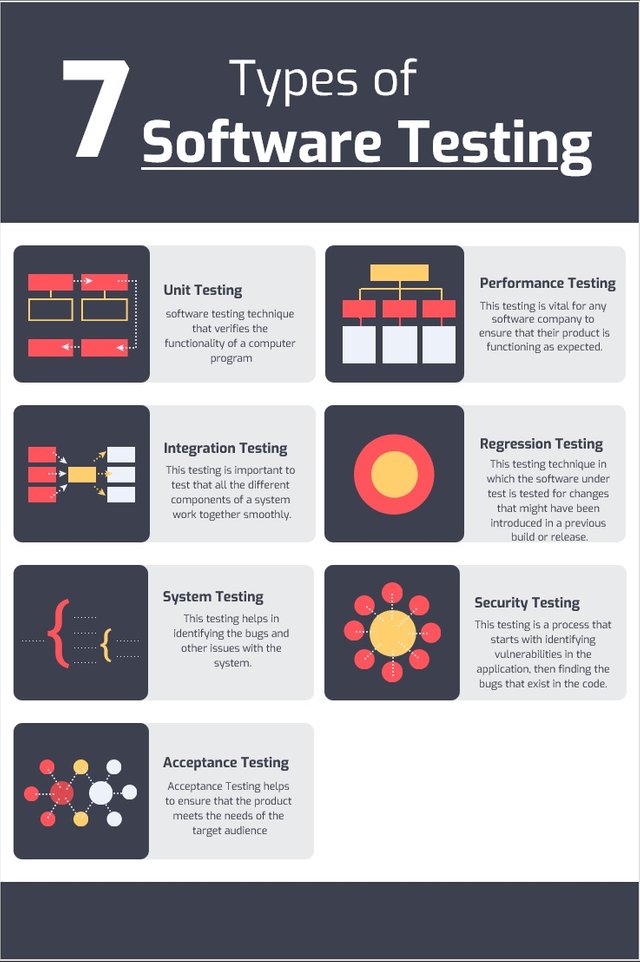Many types of software testing are used for different purposes. Some of the most common types of software testing are:
Unit Testing:
Unit testing is a software testing technique that verifies the functionality of a computer program. It is done by breaking down the program into smaller units, called units or components, and then executing them in isolation. This allows for faster development and easier debugging.
Unit testing can be done manually, but it is more efficient to use an automated unit testing tool to perform the task. This automation helps in saving time and money on manual tests.
Integration Testing:
To achieve the best results and reduce the risk of errors, integration testing is a must. It is important to test that all the different components of a system work together smoothly. There are two types of integration testing - manual and automated. Manual testing is done by humans manually checking each component while automated testing uses a tool to do the same. Automated tests are more reliable and accurate than manual tests.
System Testing:
System testing is an important part of software development. It helps in identifying the bugs and other issues with the system. The purpose of system testing is to make sure that the software meets the functional requirements, and that it does not have any defects or errors. System testing also helps in finding out whether the software is performing as expected, or if there are any issues with scalability and maintainability.
Acceptance Testing:
Acceptance Testing is a type of testing that helps to ensure that the product meets the needs of the target audience. It can be done in different ways like by using personas, user journeys, or other methods. Acceptance Testing is an important process in software development and especially for digital products. With AI (Artificial Intelligence) assistance, it can be done faster and more efficiently than ever before.
Performance Testing:
Performance testing is a process that involves analyzing the performance of a system or application. Performance testing is vital for any software company to ensure that their product is functioning as expected. It helps them identify the areas where they can improve and increase user experience. The performance testing tools available in the market are expensive and complex to use, which makes it difficult for smaller companies to afford them. With AI-powered performance testing tools, small companies can now easily conduct their tests without incurring any costs.
Regression Testing :
Regression testing is a software testing technique in which the software under test is tested for changes that might have been introduced in a previous build or release. Regression tests are often used to detect bugs that were introduced by patches, updates, upgrades, and other changes. However, they can also be used to verify the functionality of new features and functionality that was not available in previous builds. Regression testing is important for ensuring the stability and reliability of the product. It can also help to avoid regressions - unintended changes in behaviour or function caused by a change in code or configuration - which can result from new features, updates, upgrades, or patches.
Security Testing:
Security testing is an important part of the software development lifecycle, and it is an essential component of a software build. Security testing is a process that starts with identifying vulnerabilities in the application, then finding the bugs that exist in the code. It also includes executing tests to make sure that the application performs as expected. This can be done manually but it can also be done automatically by using tools like static analysis and fuzzing.
